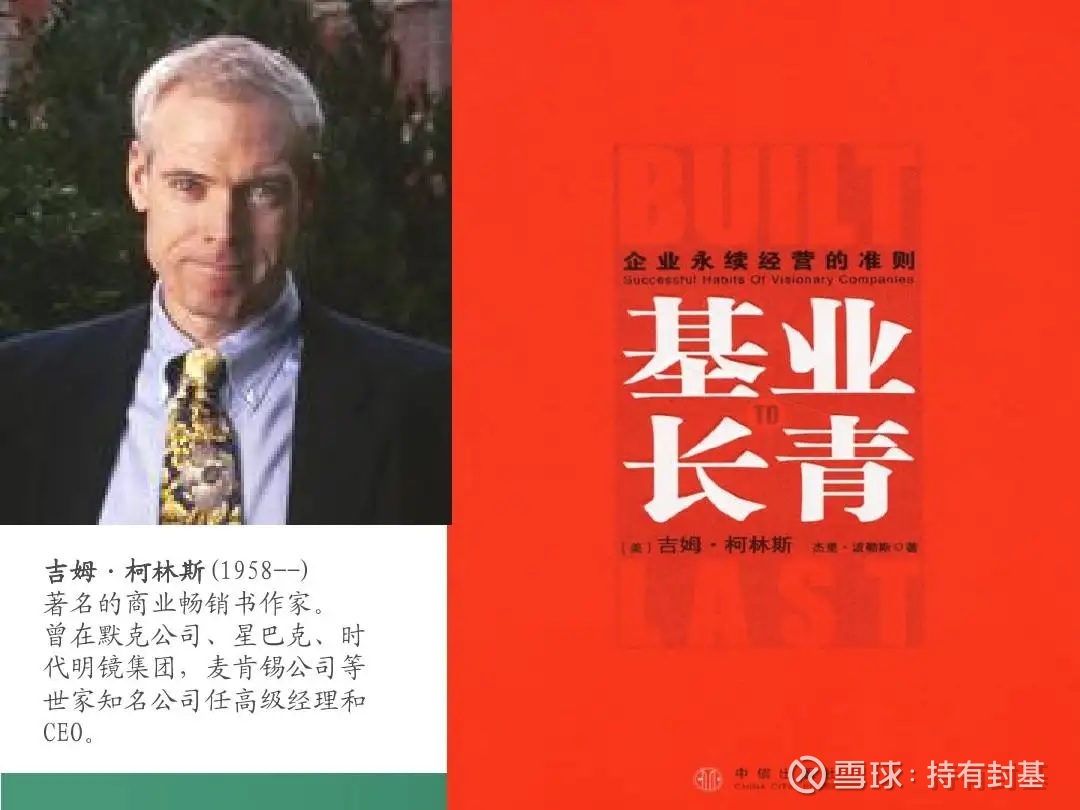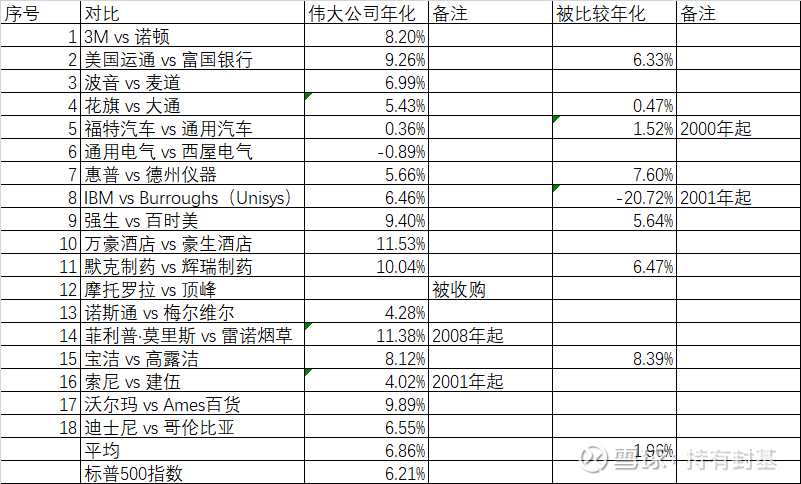
Built to Last is a management book written by American management scientists James Collins and Jerry Porras. It was first published in 1994. In Built to Last, James Collins and Jerry Porras selected 18 extraordinary and enduring companies in a six-year research project at Stanford University to study the performance of these 18 evergreen companies. success experience. Built to Last is also one of the must-read management books recommended by many companies to managers.
Of course, along with the rave reviews, there are also many critics of the book, one of which is that the author found 18 companies that performed well at the time, and then summed up why they were great. At best, it is a necessary condition rather than a sufficient and necessary condition. Decades have passed, and many of the so-called great companies of the year are either going downhill like GE or being acquired like Motorola. So, today we focus on a question, if we buy the stock of these 18 companies, what will happen in the end?

The original data comes from Choice and Snowball. It is not easy for many companies to find earlier data after historical changes. The annualized rate of return here is 3 years after the publication of “Building Evergreen” – from the close of December 31, 1997. Since then, among the 18 great companies, Motorola has been acquired, Philip Morris has only found the stock price since 2008, and Sony has only found the stock price since 2001, which is converted into an adult according to the actual year.
From the final result, even excluding the acquired Motorola, the average annualized return rate of 17 great companies in the past 25 years is 6.86%, the highest is 11.53% of Marriott Hotel, and the only stock that has fallen in the past 25 years is General Electric. Nothing great.
However, if compared with the 18 ordinary companies in the book as comparisons, these ordinary companies such as McDonnell Douglas, Westinghouse and many other companies have been acquired, even if they still exist, only Texas Instruments has an annualized rate of return that exceeds that of great companies in the same period. The 7.60% of HP surpassed HP’s 5.66%, and Colgate’s 8.39% surpassed P&G’s 8.12%. The 18 ordinary companies used as comparisons in the past 25 years are basically not as good as these 18 great companies.
If you compare it with the S&P 500 over the same period, the annualized growth of the S&P 500 over 25 years is 6.21%, which is still slightly lower than the 6.86% of the 18 great companies. So overall, these 18 companies are not bad, if not great.
Let’s take another look at the top 5 stocks in the S&P 500:

None of them were the great companies of the year, but there is no need to be harsh on the author, because many of these companies were not born when the author wrote the book. In the past 25 years, the annualized rate of these 5 companies is as high as 31.20%, far exceeding the 18 great companies.
Objectively speaking, except for very few companies, these 18 great companies of the year have not been without progress in the past 25 years. It is a difficult achievement to outperform the S&P 500 on average. Compared to Tesla, it runs slower.
Here are some inspirations we get:
1. What the great companies of the year did, we cannot deduce that it is a necessary condition for becoming a great company in the future. Thinking about it again, we can only sum up the successful experience from the great companies at the time and the failure experience from the failed companies. But the question is if we do what these successful companies do and do not do what these failed companies do, will our business be successful? It can only be said that the probability of success is improved, and the success of enterprises has a lot of chance. 2. The success stories provided by such a classic book cannot remain great for 25 years. It is not impossible for ordinary people to hold a great company for 20 years, but the probability is very small. We have seen many celebrities hold a company for decades, and the stock price has doubled hundreds of times to a thousand times. To put it bluntly, there is a certain chance in it. Too many losers will not happen. 3. Can today’s Apple, Microsoft, Google, Amazon, and Tesla be great companies 25 years from now? We really don’t know, we can only say that the probability is higher than the average company.
Therefore, if you want to hold one or a few stocks to outperform the market, this is not difficult. Keep pace with the times, keep learning, keep thinking, keep summarizing, keep practicing is the long-term way of the stock market. Don’t you see that Buffett’s first position has also become Apple.
This topic has 57 discussions in Snowball, click to view.
Snowball is an investor’s social network, and smart investors are here.
Click to download Snowball mobile client http://xueqiu.com/xz ]]>
This article is reproduced from: http://xueqiu.com/6146592061/227972040
This site is for inclusion only, and the copyright belongs to the original author.